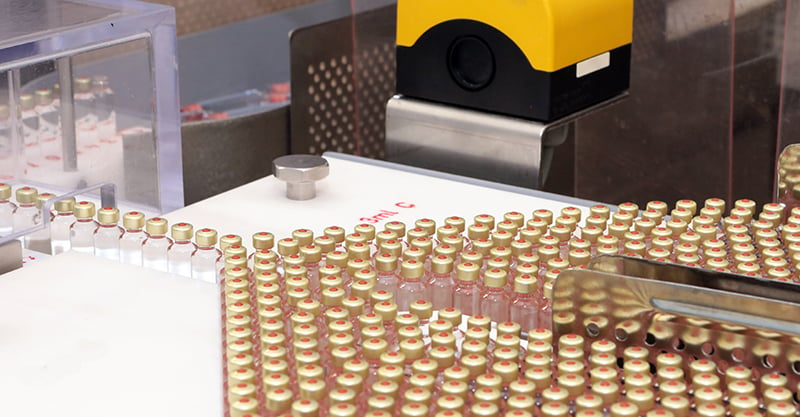
by
Dr. Burhenne
Fluoride has always been a controversial topic in the world of
dentistry, and as a dentist, I’m going to make a bold statement that may
surprise you:
I don’t think you need fluoride.
That’s
right—contrary to what the CDC, American Dental Association and Academy
of Pediatrics say, fluoride is not the miracle of dental health it was
sold to be. (
1,
2,
3,
4)
On
occasion, I’ve had patients who benefited greatly from topical fluoride
application (more on that later). However, on the whole, most people
don’t truly need it—especially when it’s ingested via the water supply.
Due
to recent advances in dental technology, there’s a better option on the
market that not only works better, but is also non-toxic (and way less
controversial).
I raised three daughters without ingestion of
fluoride. That was something I decided back in 1988 when I bought our
first water filter. I should also add that each of my daughters grew up
without a single cavity.
While many people believe fluoride is perfectly safe and that the
water fluoridation controversy
has been settled, that’s not the case. And while uncovering the truth
about fluoride can be difficult, I’m going to help you unpack the facts.
What is Fluoride?
There
are actually many different types of compounds known as fluoride. For
example, calcium fluoride is found in well water and soil all over the
world in varying degrees, with people who drink from wells in Texas
being exposed to higher-than-average levels. Seawater also contains this
compound. (
5)
Sodium fluoride, on the other hand, is the compound that was originally added to drinking water.
Unlike
calcium fluoride, sodium fluoride is greatly absorbed by your body and
is not naturally-occurring (read: it’s synthetic). Before it became
known as the miracle of modern dentistry, sodium fluoride was just good
ol’ industrial toxic waste.
The third kind of fluoride is most
concerning to me, as it makes up 90 percent of today’s fluoridated water
supply in the US. It’s called
hydrofluorosilicic acid (HFS or FSA) and is also industrial waste.
Why
is it so bad? HFS contains arsenic (a known carcinogen) and leeches
lead (also a carcinogen) as it travels through pipes more than other
types of fluoride. (
6,
7,
8,
9)
Is Fluoride Safe?
Sodium fluoride, found in toothpaste,
can have beneficial effects when used
topically. Used in prescription-strength toothpastes, it can support remineralization of teeth and make it possible to
heal cavities. At least, that was the profession’s thinking for the past several decades.
But
in order to get the fluoride into the teeth, prescription strength
toothpastes are formulated to be acidic. The acid breaks down the tooth
so that the amount of fluoride that enters your tooth is greater.
I’m
not a fan of any product that breaks down enamel, but as I mentioned,
these topical applications can be beneficial. (However, there is a
better option for remineralizing teeth, which I’ll discuss later.)
Unfortunately, fluoride in water isn’t really helpful for preventing cavities and swallowing this chemical causes much more harm than good, as it travels through your bloodstream and to all parts of your body.
For example, fluoride can pass into the brain or the placenta to a fetus when ingested. (
10,
11)
And since you only get rid of about 50 percent of the fluoride you
consume (through urination), the other 50 percent sticks around via
bioaccumulation anywhere your body stores calcium, like the inside of
your teeth, bones, and cartilage. (
12) The chemical can also build up in the pineal gland that regulates sleep. (
13)
In
animals, fluoride accumulation in the brain alters neurotransmitter
levels including epinephrine, histamine, serotonin, glutamate,
norepinephrine, acetylcholine, and dopamine. (
14)
Notably, this happens to animal subjects when the amount of fluoride in
its blood is similar to that of a human who is ingesting it regularly .
Considering
the above facts, it makes you wonder why we’re still adding this
chemical to water, especially because there’s no concrete proof that
ingested fluoride will even reduce the cavity rate.
Now, at this point, you might be asking the same question I did over 30 years ago, which is:
How did this stuff get in our water?
History of Fluoride Use
Fluoride
for the teeth was an unexpected discovery made by Frederick McKay, a
dentist who spent time in Colorado. In 1901, he stumbled across the fact
that the cases of “Colorado Brown Stain” in the many children in
Colorado Springs seemed to relate to the strength of the children’s’
teeth, even discolored as they were.
McKay found that fluoride
supports the process of remineralization but could also lead to mottled
teeth, now known as dental fluorosis. Colorado Springs had a great deal
of naturally occurring fluoride in the ground and well water that led to
this conclusion. (
15)
Then,
in 1945, studies in various US cities were conducted between
fluoridated and unfluoridated communities. The CDC claims a big victory
from these experiments: Apparently, fluoride reduced dental caries
(cavities) by 50-70 percent over the course of 15 years, leading to an
official recommendation in 1962 to add fluoride to public drinking
water. (
16)
However,
none of that data referenced in those studies is actually available. In
fact, it’s unclear whether the studies were ever completed or
well-documented.
The evidence we do have shows us that cavity
formation has actually declined equally between communities with and
without this compound in their water, which leads me to believe that it
wasn’t about the water. (
17)
Even
when the use of fluoride to reduce cavities has been studied, the
quality of research leaves much to be desired and typically shows that
if cavity rates decrease, it’s by an incredibly small margin. (
18,
19,
20)
Yes,
cavity rates have declined since the introduction of fluoride in the
water supply. However, rates have also declined at nearly identical
rates in “control” countries with no public water fluoridation
whatsoever. (
21)
The Dangers of Fluoride














